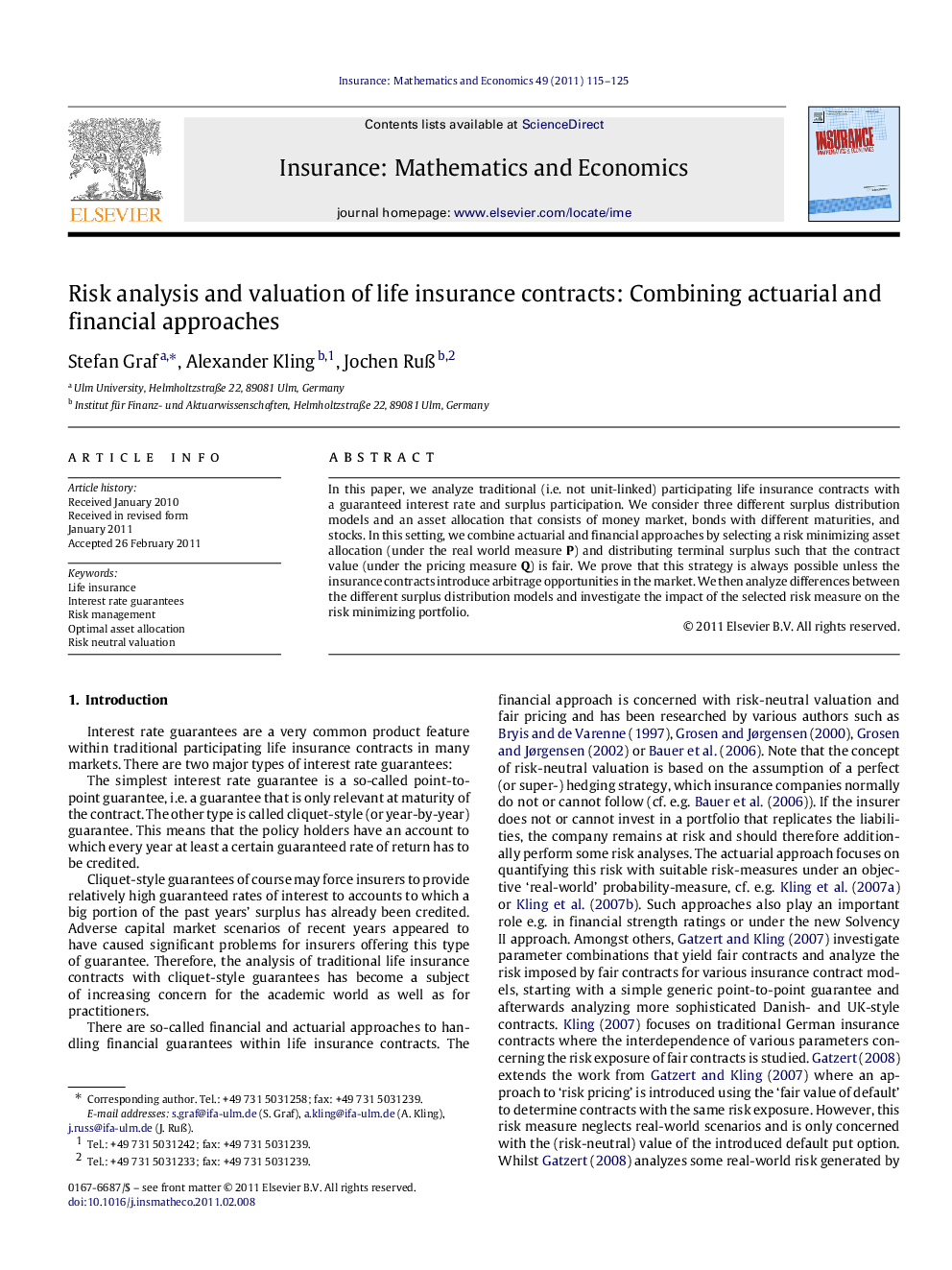| Article ID | Journal | Published Year | Pages | File Type |
|---|---|---|---|---|
| 5077043 | Insurance: Mathematics and Economics | 2011 | 11 Pages |
Abstract
In this paper, we analyze traditional (i.e. not unit-linked) participating life insurance contracts with a guaranteed interest rate and surplus participation. We consider three different surplus distribution models and an asset allocation that consists of money market, bonds with different maturities, and stocks. In this setting, we combine actuarial and financial approaches by selecting a risk minimizing asset allocation (under the real world measure P) and distributing terminal surplus such that the contract value (under the pricing measure Q) is fair. We prove that this strategy is always possible unless the insurance contracts introduce arbitrage opportunities in the market. We then analyze differences between the different surplus distribution models and investigate the impact of the selected risk measure on the risk minimizing portfolio.
Related Topics
Physical Sciences and Engineering
Mathematics
Statistics and Probability
Authors
Stefan Graf, Alexander Kling, Jochen RuÃ,
